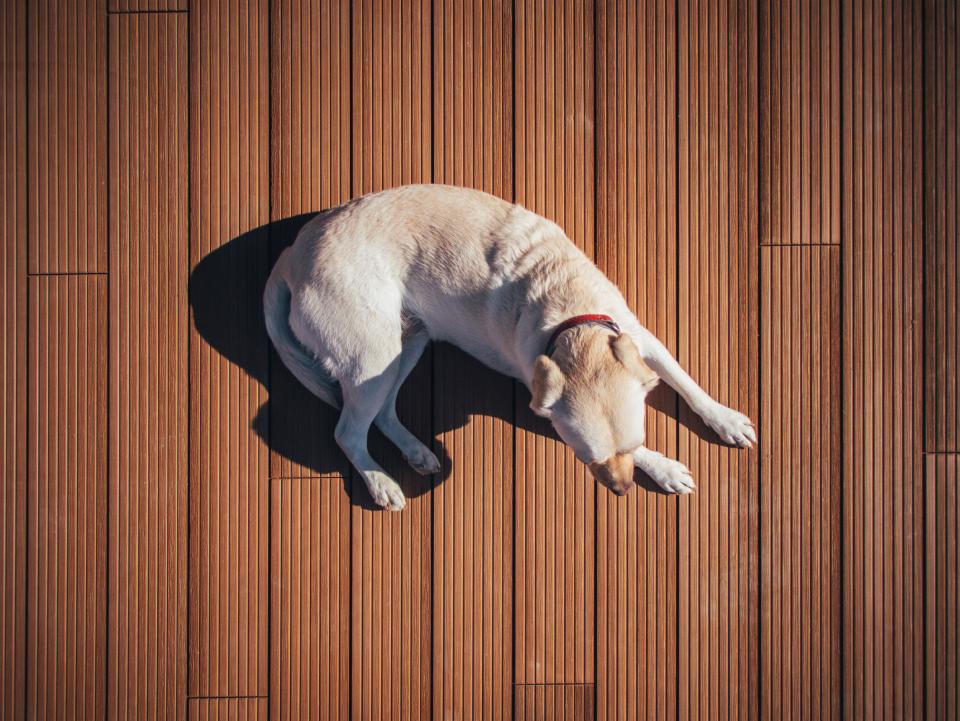
Traditional Chinese Veterinary Medicine (TCVM) is a system of medicine that’s been used in China for thousands of years to treat myriad ailments in pets. TCVM is based on the philosophical principles of “Qi” (pronounced Chee), Yin and Yang and the five elements: wood, fire, earth, metal and water.
Qi refers to an invisible life force that governs both the universe and the body. In a healthy pet, Qi flows freely while in a sick pet Qi is blocked or weakened. Yin and Yang represent the interdependence of opposites (light/dark, hot/cold) and the importance of maintaining balance. Disease is said to arise from an imbalance of Yin and Yang. The five elements also represent the notion of harmony and balance.
TCVM practitioners use four modalities: acupuncture, Chinese herbs, food therapy and Chinese massage (Tui-na). TCVM can be very effective in treating a number of health issues and chronic conditions such as inflammatory bowel disease, allergies, behavioural problems, chronic lameness, kidney disease, liver disease, paralysis caused by disc disease and cancer.
TCVM is often used in conjunction with conventional veterinary medicine and sometimes with other complementary therapies. While conventional veterinary medicine is great for treating trauma, acute injuries and conditions requiring surgery, TCVM can better address chronic conditions such as kidney failure or allergies.
TCVM emphasizes both the prevention and treatment of disease. The goal of TCVM is to restore the health of the pet rather than just alleviate his particular symptoms. Before TCVM treatments get underway, the practitioner will examine the pet by looking at his tongue, pulse and checking the pet’s response to manual stimulation of certain acupoints. From here the vet will determine what’s out of balance and come up with a custom treatment plan for that pet.
The success of the TCVM treatments depend on the age of the pet, his prior treatment history, the severity of his symptoms, knowledge of his lifestyle and the willingness of his pet parents to integrate any recommendations by the TCVM practitioner into their pet’s lifestyle.
Based on the unique needs of each pet, health is restored through the use of one or more of TCVM’s four modalities: acupuncture, Chinese herbs, food therapy and Chinese massage.
As with most complementary therapies, side effects of TCVM are minimal or non-existent if the pet is treated by a veterinarian, certified in Traditional Chinese Veterinary Medicine.
As with most forms of treatment there is a consultation fee and a fee for each followup visit, which varies depending on the veterinarian. The average cost of 100g of medicinal herbs is $70 – $80 and the amount used and the dosage will depend on the size of the animal.
Depending on the type of cancer and how far the cancer has progressed TCVM can be used alone to help achieve remission or to improve the pet’s quality of life. TCVM can also be used after the pet has undergone conventional cancer treatment, to address any lingering health concerns. It’s advised to check with your veterinarian or veterinary oncologist before starting any complementary therapy program.
In Canada, TCVM can only be practiced by a licensed veterinarian or a TCVM practitioner under the direct supervision of a licensed veterinarian. Veterinarians certified in TCVM have undergone extensive training.
Sources:
This page has been reviewed by our Panel of Experts for accuracy. Our Panel of Experts is comprised of practitioners with varying specialties and perspectives. As such, the views expressed here may not be shared by all members of our Panel.
The content on this website is for informational purposes only and is not intended to be a substitute for professional veterinary medical advice, diagnosis or treatment.